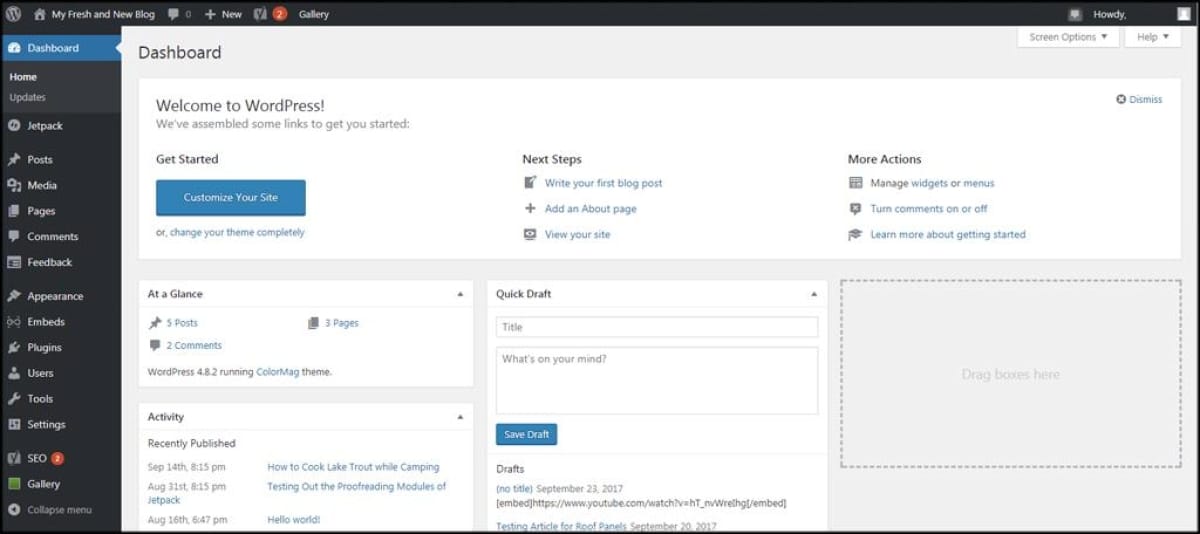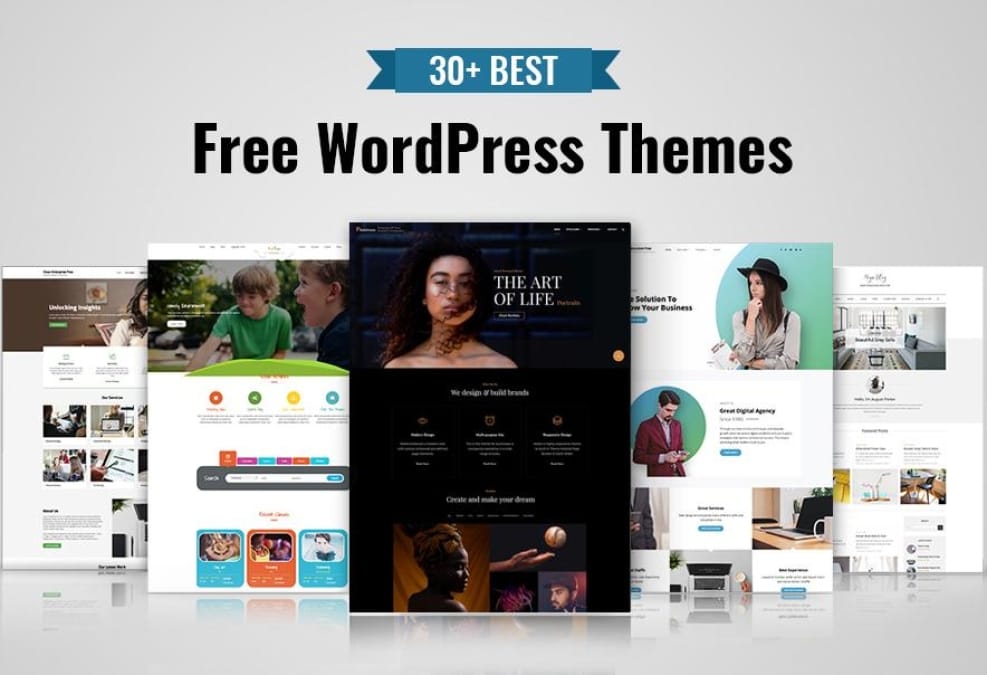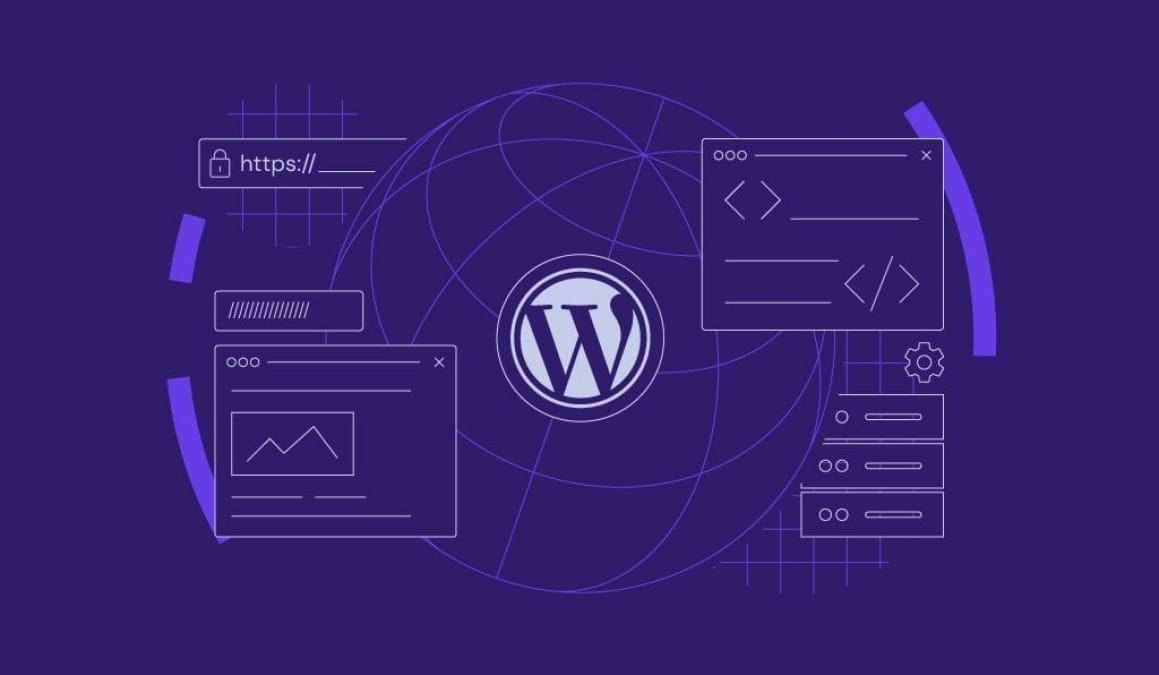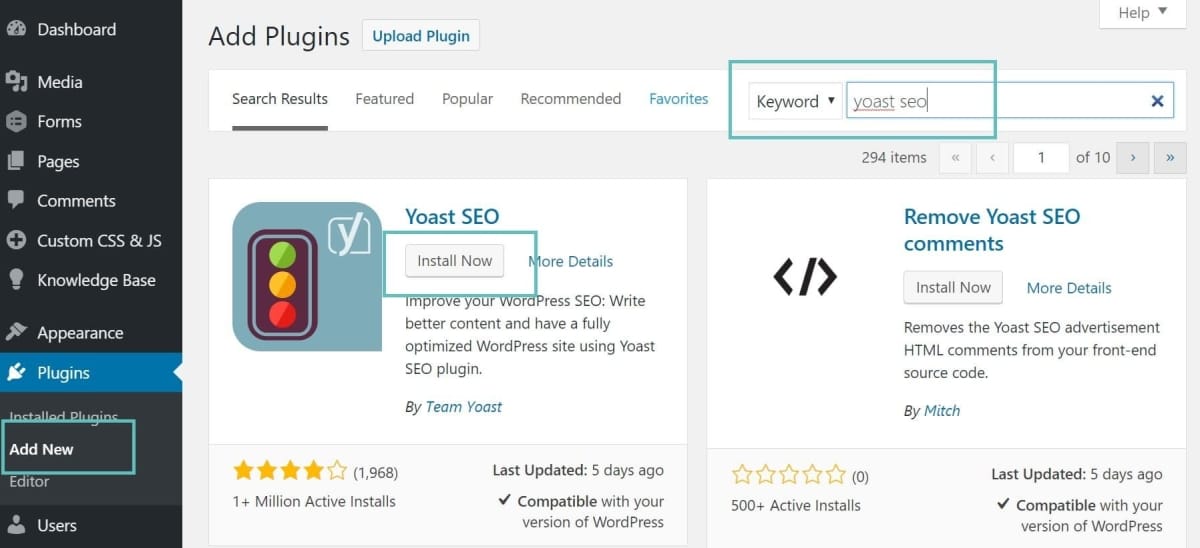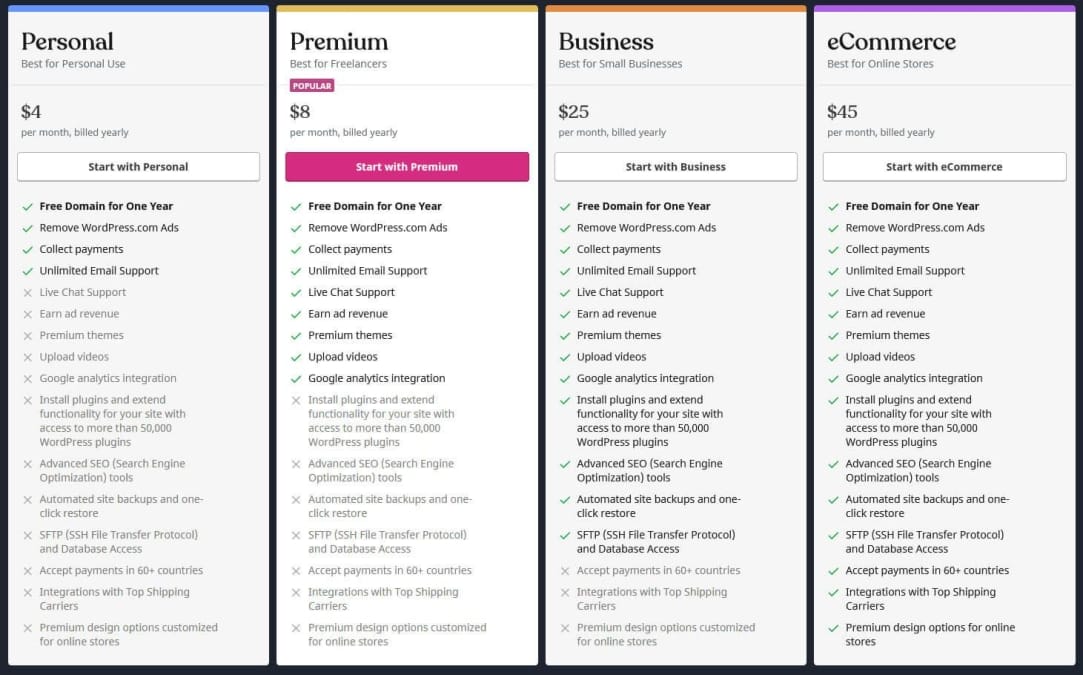When you hear about WordPress, the first thing that probably pops into your head is the idea of a free website.It’s appealing, right? Just hop online, set up a site, adn bam—you’re in buisness! But before you dive in headfirst, let’s hit the brakes for a minute. not all is as simple as it truly seems. Sure, WordPress can help you set up a blog or a business site without reaching into your pocket, but is it really wholly free? In this article, we’ll break down the ins and outs of WordPress to help you understand what you’re getting into. From hidden costs to premium features, we’re here to clear the air and give you the lowdown on whether a free wordpress site is really what it’s cracked up to be. So, grab a cup of coffee, and let’s get started!
Table of Contents
- Understanding the Basics of WordPress Costs
- what’s Included in a Free WordPress Site
- Hidden Fees You Might Overlook
- Scaling Your Site: When Free Isn’t Enough
- Navigating Free Themes and Plugins Wisely
- Q&A
- In Summary

understanding the Basics of WordPress Costs
So, you’re diving into the world of WordPress and wondering why everyone keeps saying it’s “free.” Well, here’s the deal: while you can set up a site without spending a dime, there are definitely some costs you need to keep in mind if you want to create a site that’s truly yours and is enjoyable to use. It’s kind of like getting a gym membership; you can try working out at home, but if you want all the fancy equipment and classes, you’ve got to pay up.
First off, let’s break it down into the essentials you’ll likely need:
- Hosting: Think of this as the home for your website. Good hosting can cost anywhere from $3 to $50 a month, depending on what you need.
- Domain Name: This is your website’s address, costing around $10 to $20 a year. You can’t run a site without it!
- Premium Themes and Plugins: While there are free options, premium themes usually enhance your site’s look and functionality and can range from $20 to $100 each.
Now, if you’re serious about driving some traffic and making your site look top-notch, you shoudl also consider:
- SEO Tools: Helps your site get found on search engines, often costing around $10 to $50 a month.
- SSL Certificates: This keeps your site secure. Some hosts include it free, but if not, it could cost you $50 to $150 a year.
- Maintenance and Support: If you want to hire someone to handle updates and fix issues, that could run you $50 to $200 a month.
Here’s a rough table to show you how costs can add up:
| Item | Monthly Cost | Yearly Cost |
|---|---|---|
| Hosting | $3 - $50 | $36 – $600 |
| Domain Name | N/A | $10 – $20 |
| Premium Theme | N/A | $20 – $100 |
| SEO Tools | $10 - $50 | $120 – $600 |
| SSL Certificate | N/A | $50 – $150 |
| Maintenance & Support | $50 - $200 | $600 - $2400 |
So, while WordPress can get you started for free, pretty quickly you’ll realize that to make your site stand out and function well, parting with some cash is pretty much the way to go. Just think of it as investing in your online presence, which pays off in the long run!

What’s Included in a Free WordPress Site
When you sign up for a free WordPress site, you’re getting a no-nonsense solution that lets you get started quickly, but it does come with some limitations. First off, you’ll get access to a solid selection of themes. These are pre-designed layouts that can help you make your site look pretty decent without much effort. However,keep in mind that the choices are limited compared to paid plans,so you might not find that perfect fit right away.
Another feature included in a free WordPress site is basic hosting. This means your site will be stored online, and people can access it easily. But, don’t expect lightning-fast speeds or a lot of server space. The hosting isn’t as robust as what you’d find with a paid plan,which could affect your site’s performance,especially if it starts getting traffic.
You’ll also get a free WordPress subdomain. This is a bit of a trade-off—you get a domain name like yourname.wordpress.com,which is functional,but it may not look as professional as your own custom domain. It’s totally fine for personal projects or hobby sites, but for a business or brand, it might be something you want to reconsider later.
As far as plugins and features go,your options are pretty basic. While you won’t have access to the full suite of plugins that a paid plan offers, you can still use some built-in tools like social sharing buttons and basic SEO features. It’s enough to get going,but if you want to expand functionality in the future,be prepared to either upgrade or get creative within the limits of the free plan.

Hidden Fees You Might Overlook
When you think you’ve scored a free website, it’s easy to get lost in the excitement. But hold up—there are a bunch of hidden fees that can sneak up on you, turning that “free” service into a buck-sucking endeavor. Here are some that you might want to keep an eye on:
- Domain Registration: Sure, the hosting might be free, but you’ll usually need to pay for your domain name. And if you want something snappy and easy to remember, be ready to shell out some cash.
- Premium Themes and Plugins: While WordPress offers a ton of free themes, the really cool ones often come with a price tag. And if you want to add any fancy features, that could meen paying for plugins too.
- Storage and Bandwidth Fees: Manny free plans come with limited storage and bandwidth. If your site starts getting traffic and you exceed those limits, you might get hit with fees or even find your site offline.
- SSL Certificates: Keeping your site secure is a must, but some free hosting services charge for SSL certificates.This is especially vital if you’re collecting any kind of personal information.
Let’s dig a little deeper into that domain registration.It’s not just the initial cost you should be aware of; many companies use the “auto-renewal” tactic, which means your fees can catch you by surprise when they roll around each year. It’s smart to check if you’re locked into a long-term contract that could be tough to wiggle out of later.
| Service | Typical Cost |
|---|---|
| Domain Name Registration | $10 – $20/year |
| Premium Themes | $30 - $100 (one-time) |
| SSL Certificate | $50 - $200/year |
| Storage Overages | $5 – $50/month |
Another point to think about is customer support. Free plans frequently enough come with limited support options. If you run into issues, you might find yourself stuck trying to figure things out on your own—or paying for premium support to resolve your problem quickly. It’s worth considering how much help you think you’ll need.

Scaling Your Site: When Free Isn’t Enough
When you first dive into the world of WordPress,it’s super enticing to think you can get a website up and running for free. And while that’s true to an extent, those free options can quickly turn into a headache when your site starts gaining traction. You might find yourself limited by bandwidth, storage, or features that are just too basic for what you need. At some point, you may realize that you want more control and adaptability.
As your site grows, you might have to consider investing in a paid plan. Here are a few things you might miss out on with free options:
- Limited Customization: Free plans usually lock you into certain themes and layouts.
- Ads: Many free websites push ads that you don’t control, which can ruin the experience for your visitors.
- No Domain Name: Your site will likely have a WordPress domain, which can look less professional.
Think about the added benefits of upgrading. Paid plans frequently enough come with better performance and support, which can make a big difference as more people start visiting your site. You can also access premium themes and plugins, which can definitely help you tailor your site’s design and functionality to fit your brand and audience.
| Benefits of Paid Plans | Free Plans |
|---|---|
| Custom Domain Name | Subdomain Only |
| No Ads | Ads Displayed |
| More Storage | Limited Storage |
| Enhanced Support | Community Support Only |
Ultimately, it all comes down to what you want out of your website. If you’re serious about growing your brand or business, skimping on that investment might not be the best move. It’s like trying to drive a Ferrari with cheap gas—you might get somewhere but not at the speed or comfort you’d like. Plus, with a paid plan, you set yourself up to scale, which is something every site wants to do!

Navigating Free Themes and Plugins Wisely
When you dive into the WordPress world, you’ll find loads of free themes and plugins just waiting for you. It’s tempting to grab whatever looks good at first glance, but it’s worth taking a minute to think this through. A lot of these free options can be great, but they also come with some baggage. For instance, some popular free themes might seem solid until you realize they haven’t been updated in years. That can leave you vulnerable to security issues and compatibility problems down the line.
One major takeaway is to check the ratings and reviews. Most free themes and plugins have ratings, so take a little time to read what other users are saying. If you see a ton of glowing reviews but also a few concerning complaints,it might be best to proceed with caution. Look for themes and plugins that are frequently updated, as this usually means the developer is on top of things and fixing bugs regularly. It’s kinda like finding a good restaurant—reviews tell you what you might be getting into.
also, don’t forget about the support aspect. Free themes and plugins typically come with little to no support. so if you run into an issue, you might be left hanging. In contrast, themes and plugins that offer a premium version often have better support, which can be a lifesaver when something goes wrong. You might think twice before opting for a free option if it means risking frustration later.
keep your site’s purpose in mind when choosing themes and plugins. If you’re building a personal blog, a simple, clean theme might be all you need. But if you’re looking for something more dynamic,you might want to invest in a premium theme that can do more. To help you visualize this, here’s a swift comparison table to consider when browsing your options:
| Aspect | Free Options | Premium Options |
|---|---|---|
| Cost | Free to use | Usually $30-$100+ |
| Updates | Infrequent | Regular updates |
| Support | Limited or none | Dedicated support |
| Customization | Basic customization | Wide range of options |
Q&A
Q&A: Are WordPress Sites Really Free? Here’s What You Need to Know
Q: Are WordPress sites really free?
A: Well, kind of! WordPress itself is open-source software you can download, install, and use for free. But if you want to build a website, you might run into some costs along the way.
Q: So what do I have to pay for?
A: Great question! If you’re using WordPress.com, you might start with a free plan, but it comes with limitations. You generally have to pay for things like a custom domain name (like yourwebsite.com) and extra storage space. If you go with WordPress.org, you’ll need to pay for web hosting and maybe some themes or plugins to make your site look and work the way you want.
Q: What’s the difference between WordPress.com and WordPress.org?
A: Think of it this way: WordPress.com is like renting an apartment. You get a space with some basic stuff included, but you can’t make too many changes.WordPress.org is more like owning your home. You can do whatever you want, but it comes with responsibilities—like paying for hosting and managing your own security.
Q: Do I really need to pay for hosting?
A: Yep, if you go with WordPress.org! Hosting is what keeps your site live on the internet. It’s pretty much the online real estate your site sits on. There are lots of providers out there, and prices can range from pretty cheap to more expensive, depending on what you need.
Q: Are there hidden fees I should worry about?
A: Hidden fees can pop up, especially if you start using premium themes, plugins, or add-ons. Some hosting companies might also charge extra for things like backups or security features. Always read the fine print and ask questions before you commit!
Q: Can I really make a professional-looking website for free?
A: You can, but it might take some time and creativity.With free themes and plugins, you can definitely create something nice, but you won’t have as many options. If you want that extra polish and functionality,you might want to consider investing a bit of money.
Q: What if I decide to upgrade later?
A: No problem! That’s one of the nice things about wordpress. You can start small and add features or upgrade your plan as you grow. Just keep in mind that some upgrades might require migrating your site, which can be a bit tricky, but it’s totally doable!
Q: Any tips for keeping costs down?
A: Sure! Start with basic features and use free themes and plugins. Also, look for promotions on hosting services.Sometimes, you can snag a great deal! And, don’t be afraid to learn a little bit. The more DIY you get, the more you might save!
Feel free to use this Q&A as a handy guide whenever you’re pondering the cost of starting a WordPress site!
In Summary
In wrapping things up, it’s clear that while setting up a WordPress site can be free on the surface, there are a few hidden costs that might catch you off guard. Whether it’s domain fees, hosting charges, or premium themes and plugins, these expenses can add up quicker than you’d think. so, it’s super critically important to take a good look at what you really need for your website before diving in.if you’re just starting out and testing the waters, WordPress can be a great choice without breaking the bank. But as you dive deeper and want to scale, be prepared to invest a little more. At the end of the day, the key is to figure out what works best for you and your goals. Happy site building!

